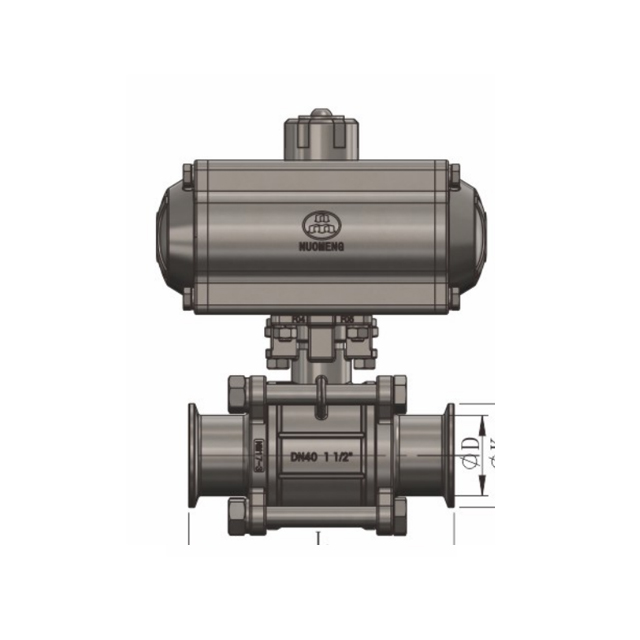T: +86-15888736999
No.67, Wutong Rd, Three-Two Rd Binhai Industrial Park, Economic & Technoloical Development Zone, Wenzhou, Zhejiang, China
Views: 0 Author: Site Editor Publish Time: 2024-03-19 Origin: Site









If you're in the market for a ball valve but feeling overwhelmed by the options, fear not! This complete guide will walk you through everything you need to know about ball valves. Starting with the different types of ball valves available, we'll explore the unique features and benefits of each. From there, we'll delve into the advantages of using ball valves in various applications, highlighting their durability, reliability, and efficiency. Finally, we'll provide you with expert tips on how to choose the right ball valve for your specific needs, whether you're looking for a valve for industrial, commercial, or residential use. By the end of this article, you'll be equipped with the knowledge and confidence to make an informed decision when selecting a ball valve for your next project.
Floating Ball Valve: The floating ball valve is one of the most common types of ball valves. In a floating ball valve, the ball is typically positioned above the fluid flow in the pipeline and is connected to the valve stem and valve cover. As the medium passes through, the ball moves with the pressure of the fluid, thereby controlling and shutting off the flow.
Trunnion Ball Valve: Trunnion ball valves feature additional support structures, often with trunnions or bearings above and below the ball, to enhance the stability and load-bearing capacity of the valve body. This design is suitable for high-flow, high-pressure, or high-temperature applications, providing more reliable sealing and operation.
Top-Entry Ball Valve: Top-entry ball valves allow the ball to enter and be removed from the top of the valve body without the need to remove the entire valve from the pipeline system. This makes maintenance and repairs more convenient, especially when ball valves installed in pipeline systems require regular servicing.
Three-Way Ball Valve: Three-way ball valves have additional outlet ports, enabling multiple fluid control schemes. They are commonly used in applications where fluid needs to be directed from one pipeline to two different directions or where two different fluids need to be mixed together.
Ball valves are essential components in various industries due to their numerous advantages. One of the key benefits of using ball valves is their durability and reliability. These valves are designed to withstand high pressures and temperatures, making them ideal for demanding applications. Additionally, ball valves offer excellent flow control, allowing for smooth and precise regulation of fluid flow.
Another advantage of ball valves is their quick and easy operation. With just a quarter turn of the handle, the valve can be fully opened or closed, providing efficient shut-off capabilities. This simplicity in operation not only saves time but also reduces the risk of leakage or malfunctions.
Furthermore, ball valves are known for their versatility. They can be used in a wide range of industries, from oil and gas to water treatment plants, due to their ability to handle various types of fluids. This flexibility makes ball valves a popular choice for many different applications.
When it comes to selecting the right ball valve for your specific needs, there are several factors to consider. First and foremost, you must determine the type of material that the ball valve is made from. This will depend on the type of fluid or gas that will be flowing through it, as different materials are suitable for different applications.
Another important consideration is the size of the ball valve. It's crucial to select a valve that is the appropriate size for the flow rate and pressure of the system it will be used in. Choosing the wrong size can result in inefficiencies or even system failure.
Additionally, you should consider the type of operation needed for the ball valve. There are manual, automated, and control valves available, each suited for different purposes. Selecting the right type of operation will ensure the valve functions correctly within your system.
Lastly, don't forget to consider the overall quality and reputation of the manufacturer. Choosing a reputable and reliable manufacturer will ensure that you are getting a high-quality product that will last for years to come.
Ball valves are crucial for controlling fluid flow in various industries, with different types like floating, trunnion, top-entry, and three-way valves available for specific applications. These valves offer reliable performance and efficient flow control, making them valuable assets in any system. Their durability, reliability, ease of operation, and versatility make them an excellent choice for industrial use. When selecting a ball valve, factors such as material, size, operation type, and manufacturer should be carefully evaluated to ensure the perfect fit for the application. With proper maintenance and care, ball valves can provide long-lasting and efficient performance.